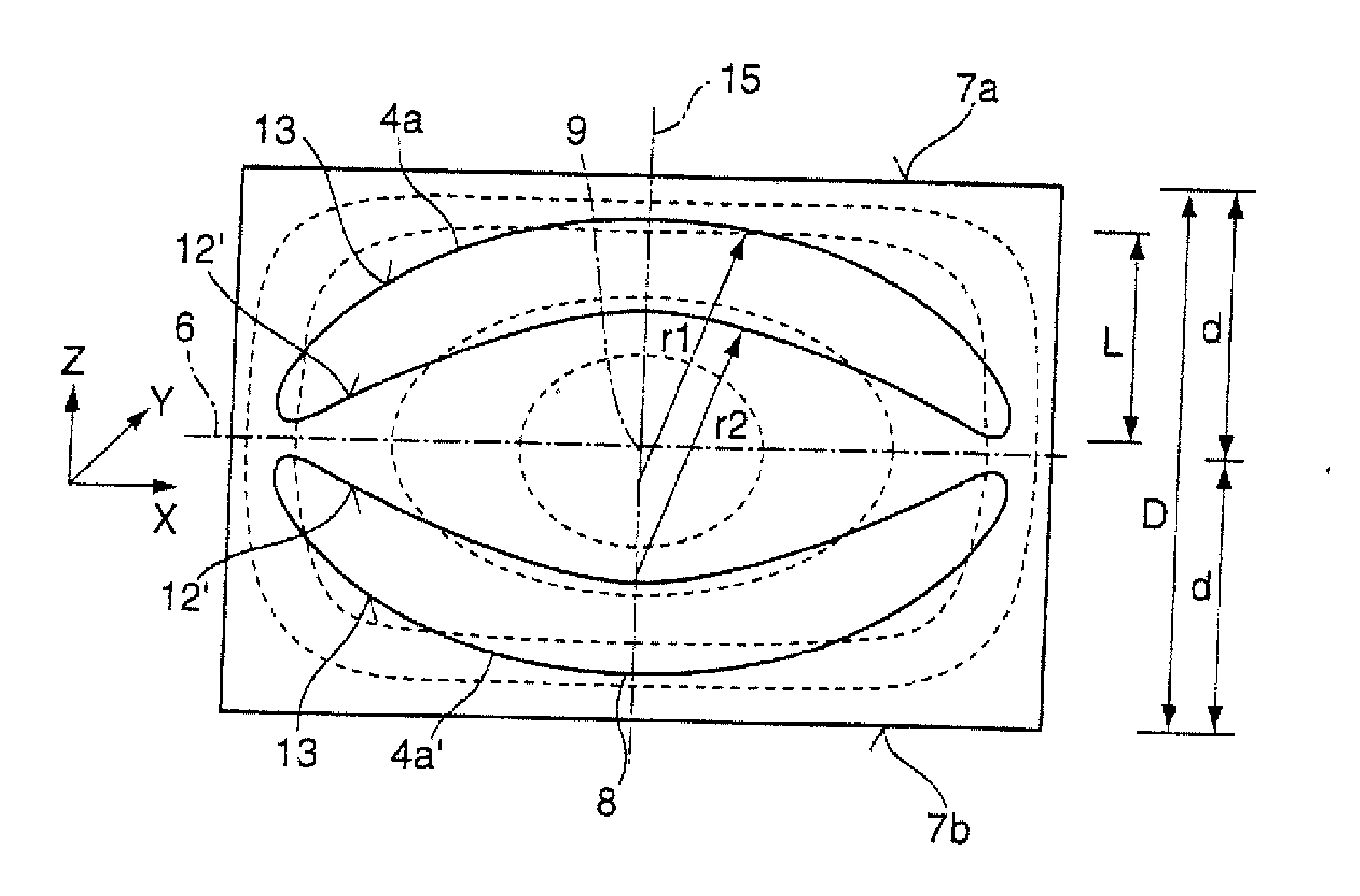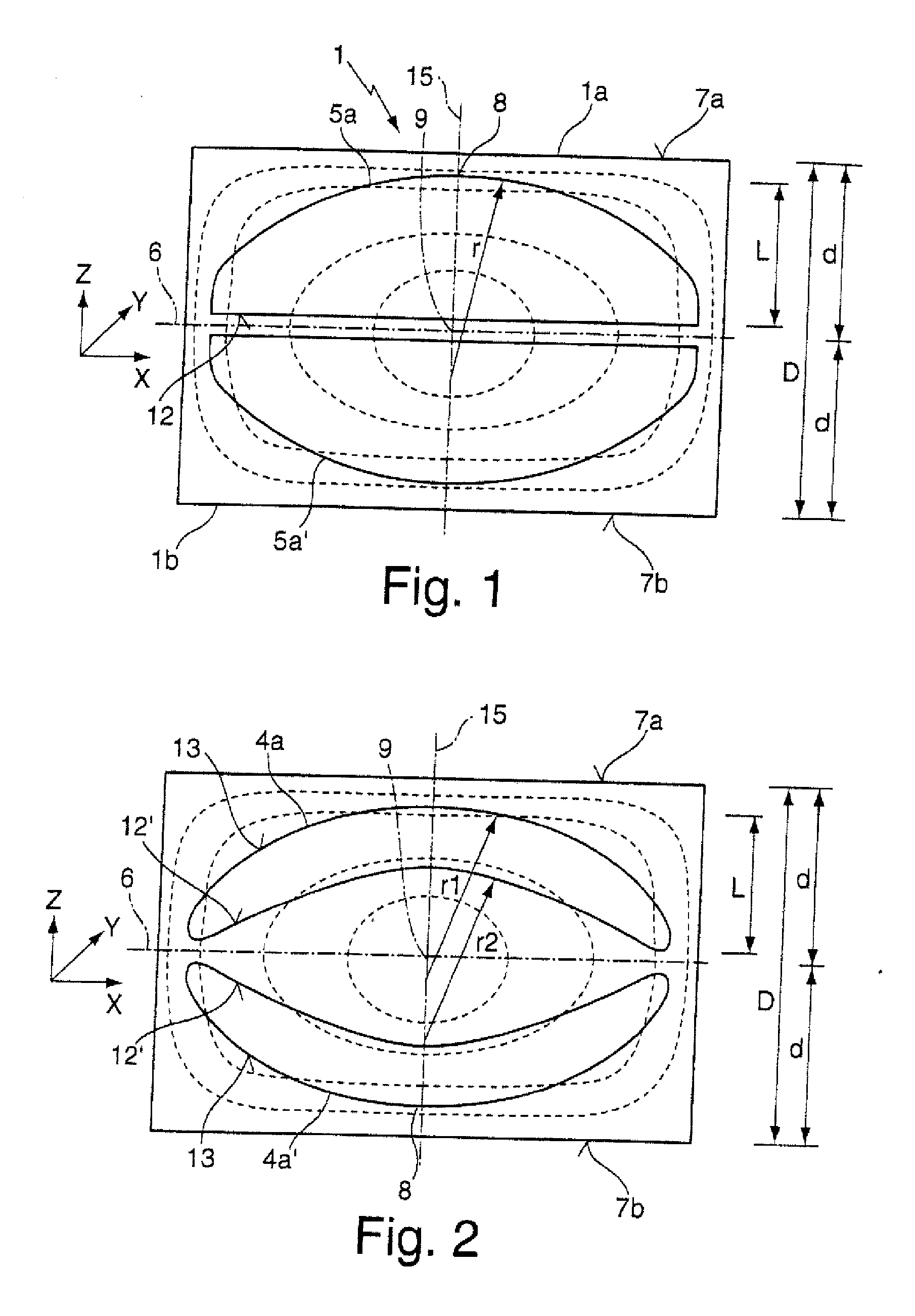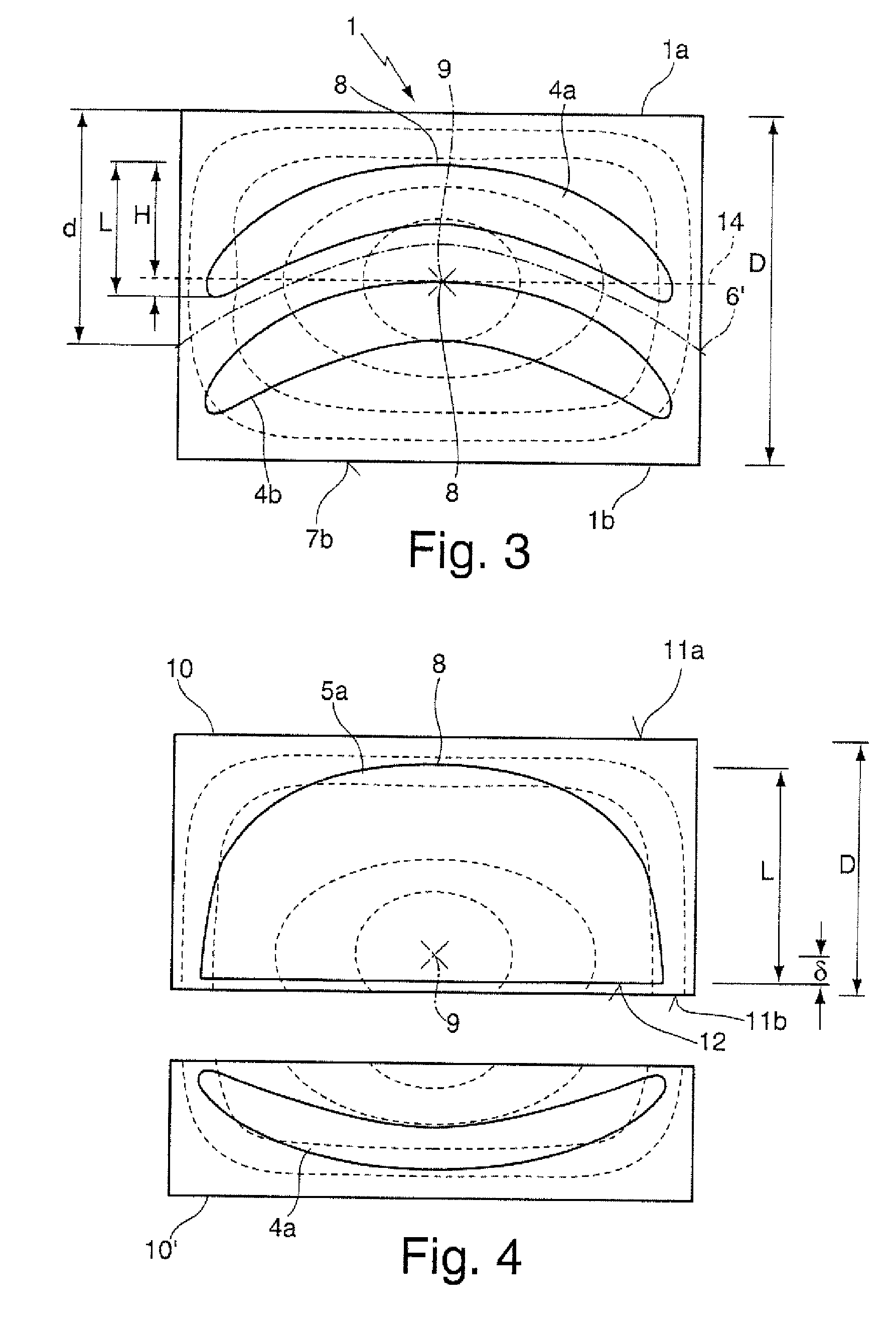Lens blank and lens elements as well as method for their production
a technology of lens elements and blanks, applied in the field of lens blanks and lens elements as well as their production methods, can solve the problems of unfavorable manner, precise effect of strain shift, and cannot be clarified by means of experiments or elaborate simulations, and achieve favorable strain distribution and reduce waste
- Summary
- Abstract
- Description
- Claims
- Application Information
AI Technical Summary
Benefits of technology
Problems solved by technology
Method used
Image
Examples
Embodiment Construction
[0067]FIG. 1 shows a section of a tempered cylindrical blank 1 which comprises a thickness D of 10 cm between a first and a second end face 7a, 7b, with the density distribution of said blank 1 essentially corresponding to the density distribution shown in FIG. 5. In this arrangement the cylindrical blank 1 and thus the density distribution are rotationally symmetrical in relation to a longitudinal axis 15 that extends in z-direction. The density is at its maximum in the center, ire at the point of intersection between a mid-plane 6 of the tempered blank 1 and the longitudinal axis 15; this is also where the strain birefringence of the tempered blank 1 is at its minimum 9.
[0068] In order to manufacture two plano-convex lens elements 5a, 5a′ the tempered blank is divided, along the mid-plane 6 that serves as a cutting plane, into a first partial volume 1a and a second partial volume 1b, which partial volumes comprise an identical thickness d of somewhat more than 5 cm. The two plano...
PUM
| Property | Measurement | Unit |
|---|---|---|
| thickness | aaaaa | aaaaa |
| thickness | aaaaa | aaaaa |
| thickness | aaaaa | aaaaa |
Abstract
Description
Claims
Application Information
 Login to View More
Login to View More - R&D
- Intellectual Property
- Life Sciences
- Materials
- Tech Scout
- Unparalleled Data Quality
- Higher Quality Content
- 60% Fewer Hallucinations
Browse by: Latest US Patents, China's latest patents, Technical Efficacy Thesaurus, Application Domain, Technology Topic, Popular Technical Reports.
© 2025 PatSnap. All rights reserved.Legal|Privacy policy|Modern Slavery Act Transparency Statement|Sitemap|About US| Contact US: help@patsnap.com



